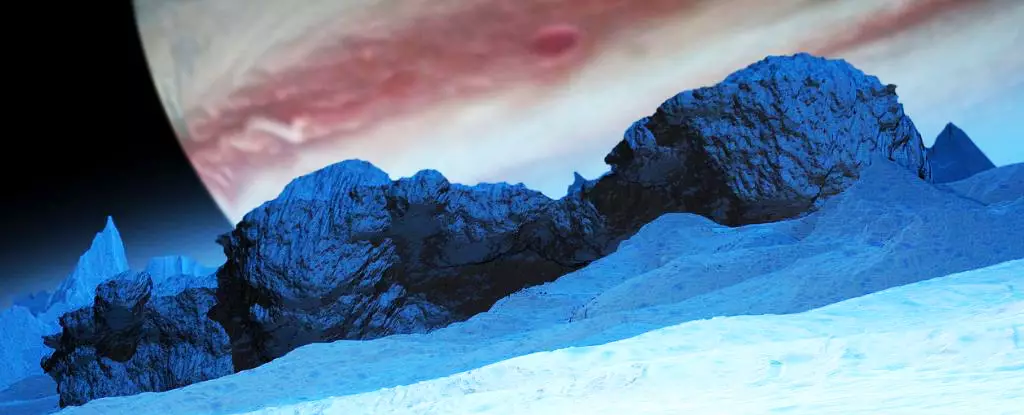Europa, one of Jupiter’s icy moons, has long been considered a prime candidate for hosting life in our Solar System. Recent data from the Juno mission to Jupiter has provided us with valuable insights into Europa’s atmosphere and its potential habitability.
While the Galileo mission has revealed the presence of an ocean beneath Europa’s icy surface, containing twice the amount of water found in Earth’s oceans, other factors also contribute to its potential habitability. Models based on data from Europa suggest that its ocean floor interacts with rock, producing energy that could support life. Additionally, telescope observations have shown a weak, oxygen-rich atmosphere, and intermittent plumes of water erupting from the moon’s ocean further support the idea of potential habitability.
Europa is not the only moon in our Solar System that shows signs of potential habitability. Mars, with its history of water and a target for the upcoming Rosalind Franklin rover mission, is another candidate. Saturn’s moon Enceladus, with its sub-surface salty ocean and plumes of water, is also a contender. Titan, Saturn’s largest moon, boasts a thick atmosphere of organic compounds that could support life. However, Europa remains a frontrunner due to its combination of water, essential chemical elements, and a source of heat.
The Juno mission to Jupiter has provided valuable information about Europa’s atmosphere. By directly sampling the moon’s atmosphere, Juno has confirmed the presence of molecular oxygen and hydrogen ions originating from the surface. These measurements suggest that Europa’s surface produces a lower amount of oxygen than previously estimated, with only about 12kg per second being released into the atmosphere. This indicates that the moon’s surface experiences minimal erosion.
The reduced production of oxygen on Europa raises questions about the moon’s potential habitability. While some oxygen may find its way to the subsurface ocean, nourishing any potential life forms there, the overall loss of oxygen may impact the availability of this essential element. The fluctuating rate of oxygen production, influenced by factors such as plume eruptions and orbital position, further complicates our understanding of Europa’s habitability.
Europa’s potential habitability continues to intrigue scientists, but the recent data from the Juno mission raises new questions about the moon’s ability to support life. Further research and exploration will be necessary to fully understand the factors influencing Europa’s habitability and the potential for life beneath its icy surface.


Leave a Reply